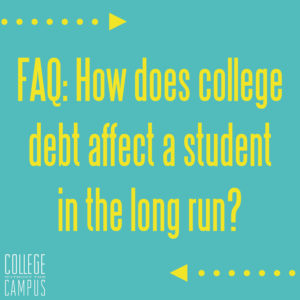“You have a unique purpose. ”
—Chelann Gienger
Tag: Book excerpt
FAQ #34: Accreditation 101
Q: What does accreditation mean?
A: Dictionary.com says accredit means “to certify (a school, college, or the like) as meeting all formal official requirements of academic excellence, curriculum, facilities, etc.”[1]
Accreditation is one way to gauge a college’s legitimacy. The accreditation process begins when an organization creates a list of requirements that schools must meet to be accredited. When schools apply to be accredited and pass the requirements, they can publicly announce that they are accredited by the organization. Students can use this information when comparing schools, and employers can reference a school’s accreditation to substantiate the education of a graduate.
This isn’t to say that all schools need accreditation. Some technical or religious schools opt to show their legitimacy through industry recognition or religious affiliation.
However, schools should be able to show in detail what a student will be learning and what recognition students will receive once they have completed a program. Taking a measure of precaution is important because fake accreditation does exist. False accreditors will “accredit” diploma mills, so it’s a good idea to verify both the school and the accrediting organization. If you are concerned about a school’s accreditation, check for telltale signs.
For students who plan to attend more than one school and transfer credits, accreditation is critical to ensuring that one school recognizes the credits earned at another. Often, colleges will list their accreditation and transfer policies online. These resources can help students as they plan courses to take and transfer their credit.
For more information about accreditation, see Chapter 9: Accreditation in College Without the Campus.
[1] accreditation. Dictionary.com, Dictionary.com Unabridged, Random House, Inc. http://www.dictionary.com/browse/accredit.
![]()
FAQ #4: The difference between online classes and credit-by-exam tests
Q: Hillary, how is the way you took courses different than taking online classes?
A: The main difference between credit-by-exam testing and online courses is the lack of a professor to guide you in the credit-by-exam method. Credit-by-exam courses put the burden of learning upon the student. However, this doesn’t mean that the student is alone in learning: the student has the opportunity to select resources and advisors as needed. The structure of online courses parallels a traditional college course, including a specified textbook to learn from and interaction with a professor and other students.
![]()
FAQ #6: College Debt
Q: How does college debt affect a student in the long run?
A: First we must recognize that college debt can be acquired to fund not just tuition, but a particular lifestyle. “Students do not view debt exclusively as an investment, but also as a vehicle for consumption.”[1] Using debt, students can move out from home, join clubs that require monetary resources, and work less. Many students feel justified in utilizing debt because of the perceived freedom that this money provides: freedom to fully embrace the college experience. However, the consequences of this debt can affect the student for years.
In the same paper quoted above, the authors suggest that college debt affects when a person marries and has children. They also more strongly suggest that debt has an effect on buying a home and a car.[2] In 2014, The New York Times published a piece entitled, “The Ripple Effects of Rising Student Debt,” corroborating the influence of debt on home buying. They highlight research showing that people with student loans are less likely to purchase a home as well as start their own business.[3] In a Pew Research study, it was found that the median net worth ($64,700) of households headed by a young college-educated adult with no student debt was seven times greater than median net worth ($8,700) of households headed by an adult with student debt.[4]
Student loan debt has also been found to negatively affect individuals’ physical well-being and sense of purpose.[5] In 2014, Gallup-Purdue released a report studying more than 30,000 college graduates across the United States. In this index, well-being was separated into five aspects: purpose, social, financial, community, and physical. Debt negatively affected all five.[6]
[1] “Students do not view debt exclusively as an investment,” Steven Brint and Mathew Baron Rotondi, “Student Debt, the College Experience, and Transitions to Adulthood” (paper presented at the annual meeting for the American Sociological Association, Boston, July 31-August 4, 2008), 5.
[2] an effect on buying a home and a car. Ibid., 22-24.
[3] less likely to purchase a home Phyllis Korkki, “The Ripple Effects of Rising Student Debt” The New York Times, May 24, 2014, http://www.nytimes.com/2014/05/25/business/the-ripple-effects-of-rising-student-debt.html.
[4] was seven times greater This is a fascinating analysis of student debt’s effect on economic conditions of young Americans. Richard Fry, “Young Adults, Student Debt and Economic Well-Being” Pew Research Center, Washington, D.C., May 14, 2014, http://www.pewsocialtrends.org/2014/05/14/young-adults-student-debt-and-economic-well-being/.
[5] individuals’ physical well-being and sense of purpose. Allie Bidwell, “Student Debt Hurts More Than Your Wallet” U.S. News & World Report, August 7, 2014, http://www.usnews.com/news/articles/2014/08/07/having-high-levels-of-student-loan-debt-can-hurt-your-health-too.
[6] Debt negatively affected all five. Allie Bidwell, “Gallup: College Type Has Little to Do With Success” U.S. News & World Report, May 6, 2014, http://www.usnews.com/news/articles/2014/05/06/gallup-purdue-index-measures-the-magic-equation-to-student-success.
![]()



